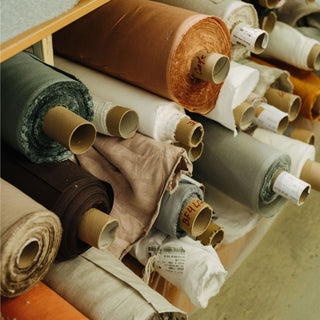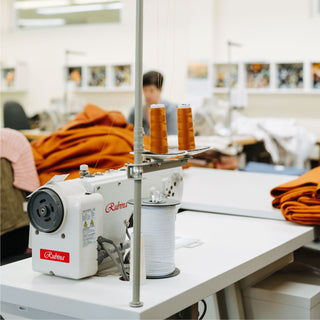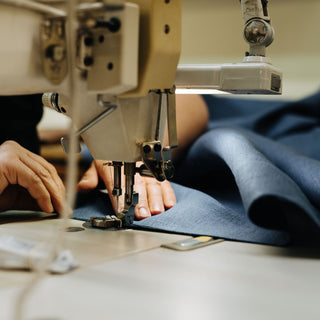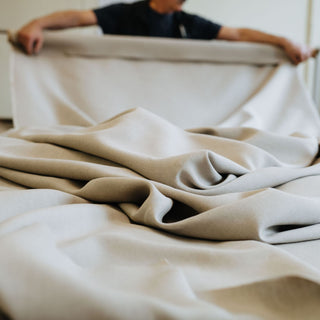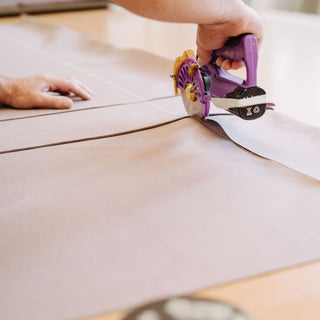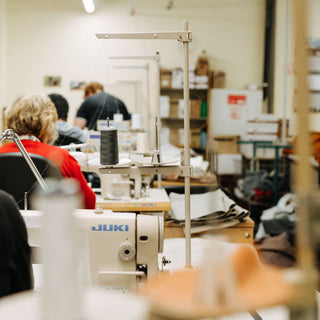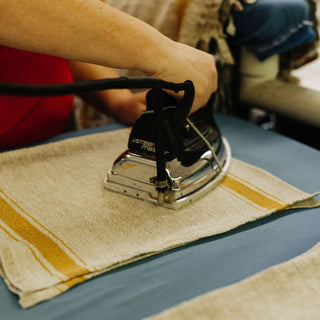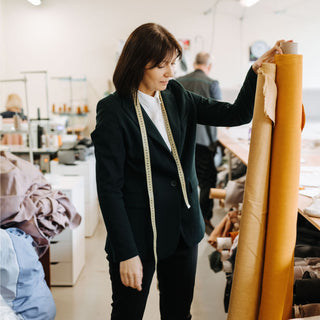
Making Your Daily Life Beautiful
We want to keep the proud traditions of Lithuanian linen deep within our brand identity. Thus, it’s quite important for us to support local producers by managing our supply chain and general production here in Lithuania.

Conviction
Compared to cotton, hemp requires 50% less water and land to grow.
Hemp cultivation process not require toxic pesticides and insecticides. which can be extremely harmful not only for you but also for the environment.
All parts of hemp plant can be used. The fibers separated from the woody parts are used for textile, and the woody parts are usually used for other purposes, such as animal bedding.
Highly biodegradable and can be composted that will not affect pollution.

Striving for perfection
Perfection isn’t everything. It is the only thing. As we keep spreading our inspiration and love for linen to people all around the world, we each keep our strong commitments to quality. From our very first steps, we’ve poured our souls into every single item we create. Overall, we want you to have complete satisfaction with our products.

A look from the inside
Who could tell more about how Linen Tales’ products are made than the person responsible for the whole process? We sat down with Inga, the Head of Production and Supply so she could reveal the behind-the-scenes of how Linen Tales home linen is made.
Q.: How many people do you have on your team? Could you tell us a bit more about your longest serving team members?
Inga: There are twenty-eight people on the manufacturing team. Six of them are department managers and the remaining staff are the people who make the products come to life with their own hands. The whole team is wonderful, each person performs well in their unique role, and we are all working as one. One of the longtimers on the team is Regina. She is mainly responsible for ironing but before that she worked with packaging, quality control, and many other things. Now she is managing the whole ironing and packaging department and making sure that the products are flawless and leaving the sewing studio on time.
Q.: What does a regular day at the sewing studio look like?
Inga: We start the day by cutting and sewing products for online orders, as they are the most urgent. As you know, Linen Tales offers many different products: from linen bedding to tabletop, kitchen linen and beyond, everything comes in multiple colors and sizes. So this step requires a lot of mindful planning because our aim is to use only the precise amount of fabric necessary, generating as little waste as possible. After that, we make sure the products sewn yesterday are ironed and packaged. At the end of the day, packaged products are placed in boxes and go to the shipping department to be shipped to the customers.
Q.: Inga, as the manager of the manufacturing and supply department, what challenges do you face at work?
Inga: Well, every department has its own challenges and struggles. I would say my most important task is to inspire and motivate my team to believe in themselves so we can reach our goals. When things don’t go as planned, we face quality issues, or we’re contending with a higher workload, I especially need to make sure I encourage the team’s spirit and keep everyone focused.
Q.: The team is manufacturing products for both B2C and B2B clients. Given that there are many orders you probably encounter a demanding client from time to time, how do you ensure the quality of the products is always the best?
Inga: Simple - we put love and attention into everything we do: from cutting and sewing to ironing and packaging. Also, because Linen Tales as a company has deep-rooted linen traditions, we have a great deal of knowledge on how to handle the fabric and make the best out of it.
In addition to that, every product undergoes three quality checks. First after washing, then after ironing, and finally during the packaging process. Before transferring the order to the shipping department, we double-check to ensure that the boxes contain the right products.
Also, with B2B clients we confirm the final contents of the order by sending product photographs from the sewing studio. We photograph the items, send the pictures to the client and once we receive confirmation that everything looks good, we pack and ship the order.
Q.: What fairtrade standards do you apply?
Inga: We ensure fair wages by engaging in collective bargaining or negotiation procedures that actively involve workers and their representatives. The well-being of our employees is a top priority, and we maintain suitable ventilation, lighting, and temperature control to ensure safe and healthy working conditions. Additionally, we have implemented measures to prevent accidents, injuries, and exposure to harmful substances. Our team members work a maximum of 8 hours per day, excluding weekends, and are entitled to paid holidays amounting to 20 days per year. Discrimination and harassment are strictly prohibited within our organization.
Q.: Not all manufacturing steps are done in your sewing studio. How do you choose the right partners?
Inga: The main criteria are reliability and trust. It takes time and effort to find partners and create good relationships. So we highly value our long-term partners and appreciate the mutual trust and the opportunities to learn from each other.
Q.: Is it true you personally use many linen products at home? Why would you recommend choosing linen?
Inga: Yes, you will find a lot of linen at my home. I love it because linen is sustainable, highly durable, and easily washable. Out of everything, linen bedding is what I adore the most and so does my family. It’s highly breathable and moisture-wicking so it’s great all year round as you don’t feel cold in winter or hot in summer. Linen is all about comfort and softness.
